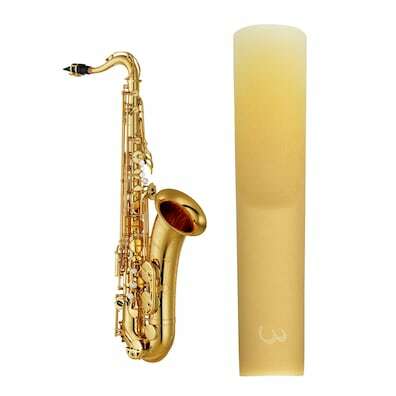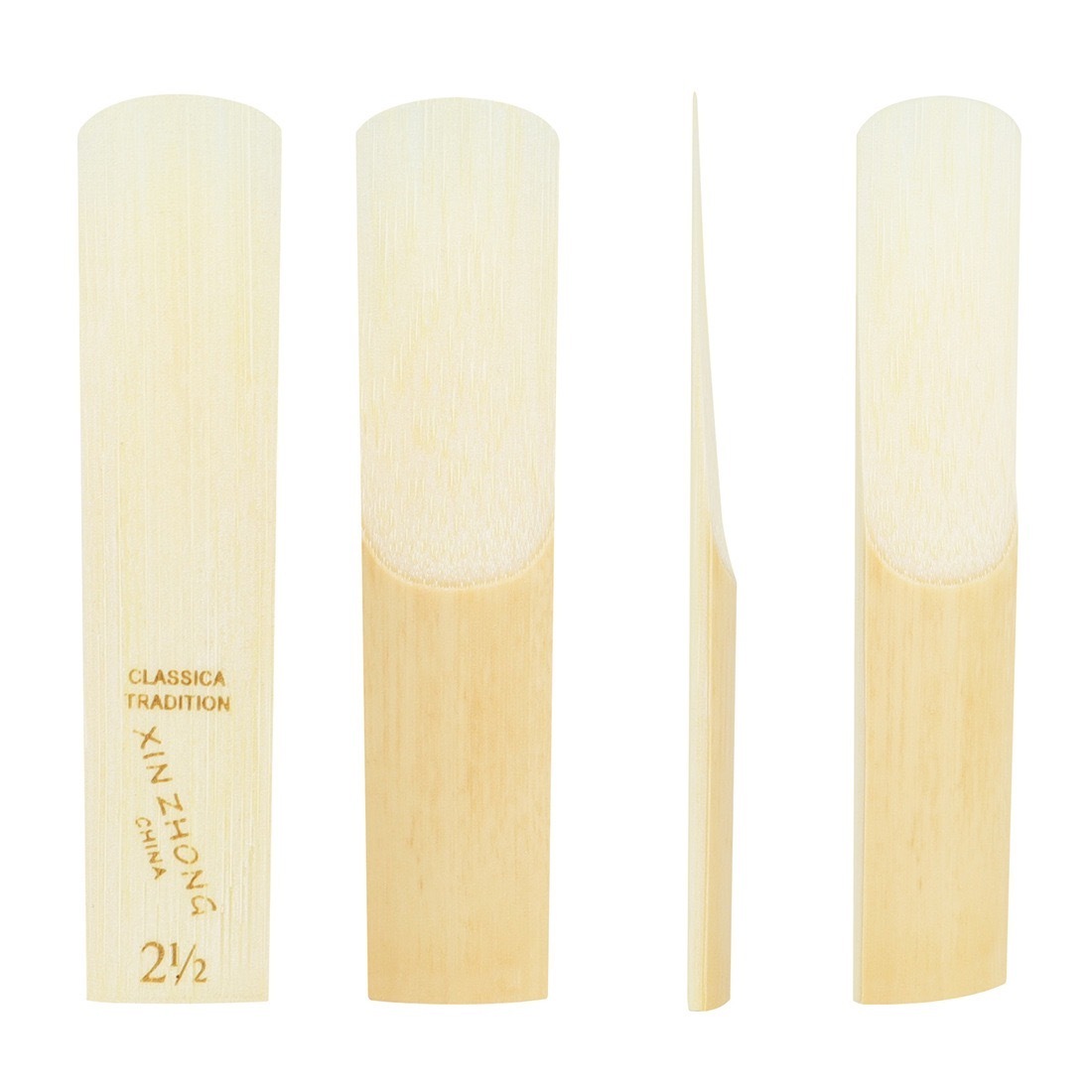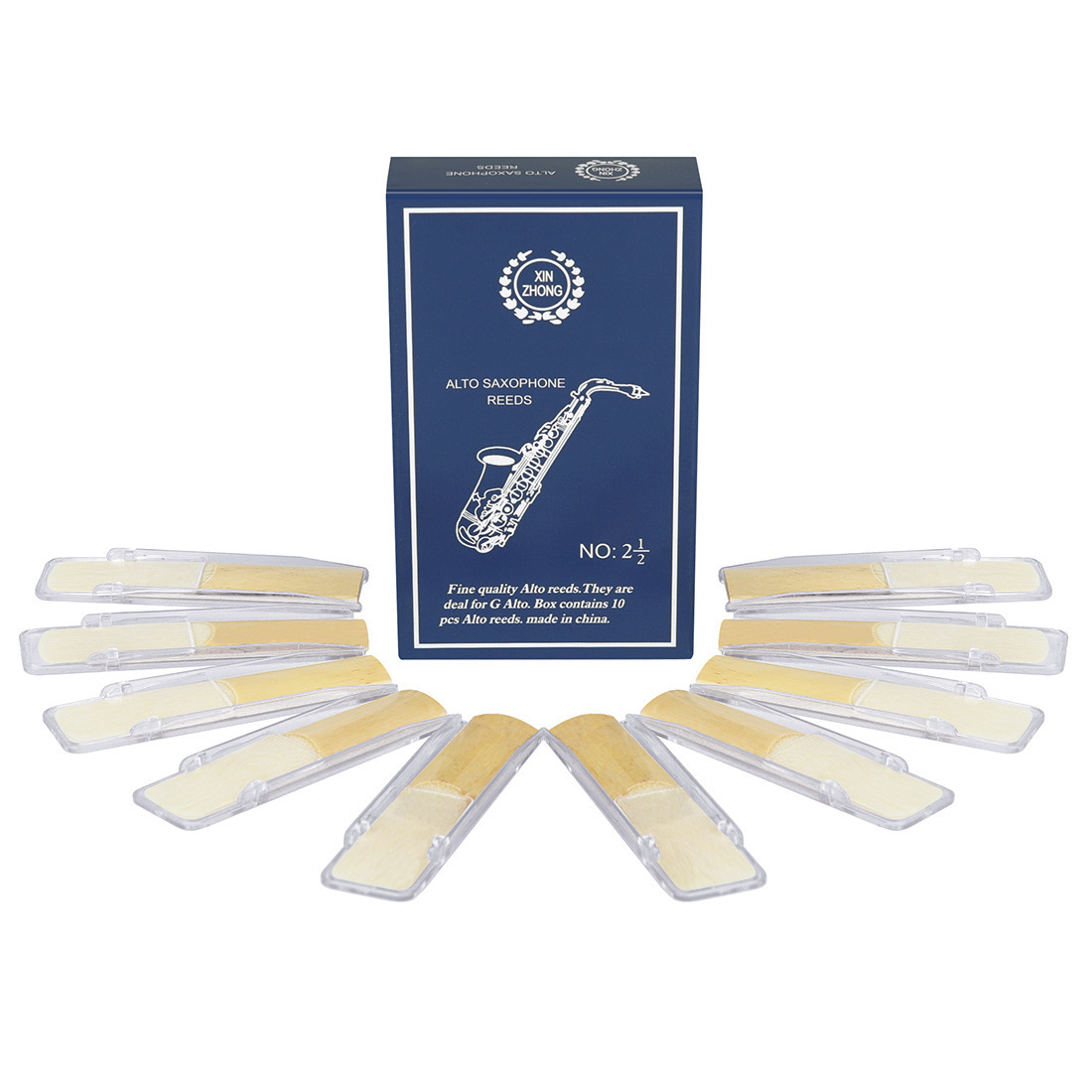
Recently, many students are asking about the reed of saxophone and are very curious. How does this small reed affect our performance? What are its different categories? How to choose the right reed? How should we maximize the role of reed?
Working principle of saxophone reed:
We need to know its working principle before selecting the right kind of reed. Only after we know its essential working principle can we really know which kind of reed we are suitable for. First of all, we should know that the reed of saxophone is generally made of cane plant, which is also the most traditional reed material.

A good reed of saxophone can fundamentally help our performance. The reason why saxophone can make sound is the vibration of the reed. You can also try it now: when we take the reed off the mouth of saxophone, can you still blow it? The answer will be no. The reed of saxophone is like a human vocal cord. It generates sound waves through the vibration of the reed to make the instrument sound. Therefore, the state of the reed is very important for saxophone players.

Generally, the hardness index of reed can determine the basic timbre of saxophone, which is usually marked with numbers. The smaller the number marked on the reed of saxophone, the thinner the reed and the lower the hardness. Therefore, the smaller the force required when playing, the easier it is to make sound. Therefore, this kind of reed will be suitable for beginners or students with weak breath strength. However, it is precisely because this kind of reed requires less breath, which will lead to the thinning of timbre, the lack of thickness and explosive force of the sound played, and it is easy to make mistakes when playing high notes. The larger the number marked on saxophone, the thicker the reed and the higher the hardness. Therefore, this kind of reed is suitable for students with good control and sufficient strength to adapt, and the tone of this kind of reed will also be thicker and stronger.
If you still don't know how to choose the appropriate reed, you can buy several different types of reed to try. If you still cannot decide which reed is more suitable for you after trying, you need to consider the following questions: Which reed is too thin to use at all? Which reed is too thick to use? Which reed is a little thicker, but I can basically control it? If the above problems occur, you can directly ignore the use of too thin or too thick reed. However, when you find a slightly thicker model, you can try to run in with this reed. After running in for a period of time, you will begin to adapt to the thickness of this reed. Of course, if you still feel unable to adapt, you can choose the appropriate reed grinder to correct the reed. Note: The plastic reed cannot be modified.
Relevant brands of saxophone reed:
There are many brands of saxophone reed on the market, and the price is also very different. The more expensive saxophone reed brands: vandoren, dadario, rico, legere, etc.The quality of these brands' reed is relatively better, but for beginners or non-professionals, frequent replacement and use may be a waste, because the reed may have been discarded or damaged before the maximum value of these reed has been played. At this time, you can choose the reed brand with lower price to use: xinzhong, etc.


How to select the reed:
The reeds we usually buy are generally made of reeds. Because they are made of natural materials, each reed will have its own unique features, and there will not be two identical reeds in the world. When selecting the reed, we should select the reed that has been fully polished. Generally, the texture on the fully polished reed will continue to the top of the reed. Secondly, we should choose the slightly thicker reed when selecting it, because the reed will become thinner after several blows, but we should not choose the thicker reed.

In addition to the classical cane planted reed, there also is plastic reed. Generally speaking, this kind of reed is more durable than cane plant reed, but it does not mean that this kind of reed should not be stored carefully, because it also has a service life. The plastic reed has a more stable timbre and use experience, but the timbre of the plastic reed cannot replace the traditional cane plant reed.
Many students will also wonder whether the reed of saxophone can be divided into jazz genre and classical genre? Is there a gap between them? In fact, there is still a slight gap between classical and jazz reeds, but the gap between them is not large, so many performers will not distinguish between these two types of reeds. Because the cutting of classical reed is mostly curved, while the cutting of jazz reed is relatively straight, but in general, the timbre gap between the two genres is mainly controlled by the performer. Of course, if you have a high pursuit of music, it is better to buy jazz reed.






